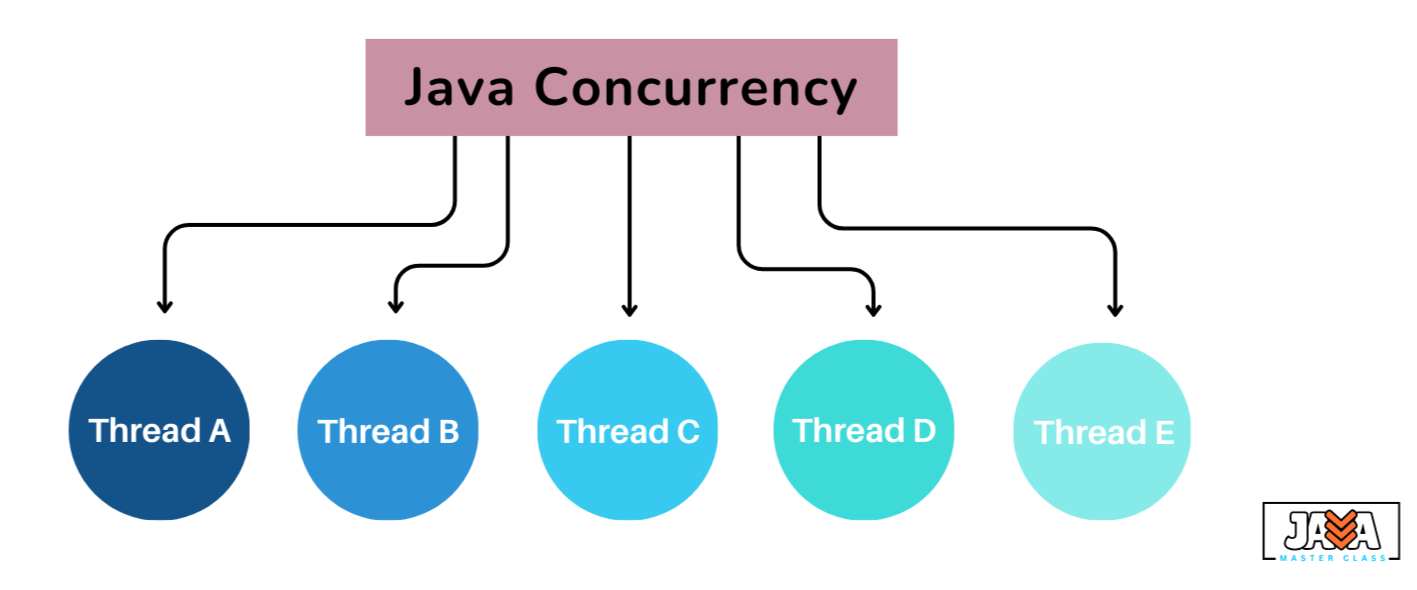Concurrency is a fundamental concept in programming that allows multiple tasks to run simultaneously or in an overlapping manner, improving the efficiency and performance of applications, especially in multi-core or multi-processor systems.
At its core, concurrency refers to the ability of a program to execute multiple tasks at the same time. These tasks can either be executed in parallel (on different processors or cores) or interleave (on a single processor by switching between tasks rapidly). Concurrency allows for smoother user experiences, better utilization of system resources, and the ability to scale applications. Java provides several tools and APIs that make managing concurrency easier, especially as modern systems become more parallelized.

Role of Concurrency
- Performance Optimization: By allowing multiple threads to execute simultaneously, Java applications can perform complex tasks faster. For instance, while one thread handles input/output, another can process data, significantly reducing the time required to finish tasks.
- Scalability: Concurrency makes your applications more scalable. Multi-threaded applications can efficiently handle a larger number of users or requests, making it essential for web servers and other high-performance systems.
- Responsive Applications: For graphical user interface(GUI) applications or real-time applications, concurrency ensures that the application remains responsive. While one thread handles user interaction, another can carry out time-consuming operations in the background.
Concepts in Concurrency
Java provides several core components to manage concurrency:
- Threads: In Java, each unit of execution is represented by a thread. A thread is the smallest unit of a CPU’s execution, and multiple threads can run concurrently within a program.
- Runnable Interface: The
Runnableinterface provides a way to define tasks that can be executed by multiple threads. It provides a simple approach to executing code in parallel. - Thread Lifecycle: Threads in Java go through various states, from new, to runnable, to running, to waiting, and back to terminated. Understanding thread lifecycle is essential for debugging and controlling threads effectively.
- Synchronization: To prevent data inconsistency or corruption when multiple threads are accessing shared resources, Java offers synchronization mechanisms. Proper synchronization ensures that only one thread can access critical sections of code at a time, making concurrent programming safe.
- Locks: Java offers lock mechanisms like
ReentrantLockthat allow fine-grained control over concurrency. Unlike synchronization, locks can offer more control and flexibility, such as the ability to attempt locking or lock timeout. - Concurrent Collections: Java provides specialized concurrent collections, such as
ConcurrentHashMapandCopyOnWriteArrayList, which are thread-safe and designed for high-performance concurrent access.
Challenges in Concurrency
While concurrency can dramatically improve performance, it also introduces complexity. The main challenges include:
- Race Conditions: When multiple threads access and modify shared data concurrently, and the outcome depends on the order of execution, a race condition occurs. Proper synchronization and thread-safe mechanisms are crucial to avoid this.
- Deadlocks: A situation where two or more threads are waiting for each other to release resources, causing them to be stuck indefinitely. Understanding and managing locks effectively can help prevent deadlocks.
- Thread Safety: Ensuring that objects are safe to be used by multiple threads without corrupting their state requires careful attention to thread safety in code design.
